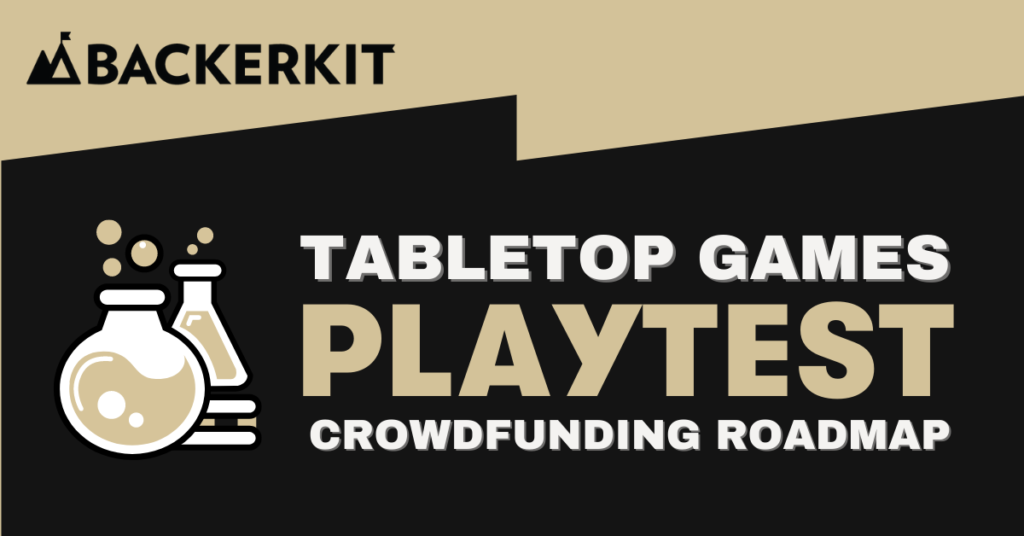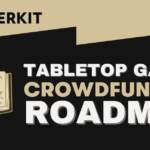
Now that you have a campaign-ready prototype, it’s time to start working on your development budget.
Your budget and the price of your game aren’t just numbers that you can pull out of thin air. You absolutely must do your research. If these numbers are off by a significant amount or the budget isn’t feasible, you could end up having to cover costs out of pocket rather than using the funds raised in Kickstarter.
Before you dive in and start crunching numbers, write out everything you’ll have to pay for, including:
- Developing your prototype
- Manufacturing
- Marketing
- Artwork or graphic design
- Kickstarter platform fees
- Pledge Manager fees
- Packaging
- Fulfillment
- Shipping fees
- Crowdfunding agencies or services
- Taxes (a significant piece of the pie in the US!)
- Any creative assets that you’ll need for your campaign page or promotions
It might help to put this all in a spreadsheet. You want to be able to visualize and account for all of your costs. You don’t want there to be any surprises. In fact, now is a good time to reach out to the people in the communities you’ve joined to find out about any unexpected costs they had to deal with while creating their games.
Now, you can start looking at the numbers. Get estimates on the campaign and development costs you’ve listed. The information you collect will help you develop a budget that works for your project. However, since you don’t have exact numbers at this stage, remember to add some padding to your budget to cover any miscellaneous costs or surprises.
Your game’s price will be informed by this budget — that price should cover your manufacturing costs. But to determine your MSRP (Manufacturer Suggested Retail Price), you should also look at other games on Kickstarter and out in the marketplace that are comparable to yours (consider things like the number and type of the components and the complexity and size of the game). How have these creators priced their games? This comparison will give you a sense of what people are willing to pay for a game like yours.
Next, think about how you want to position your game. Is it an economical choice where people get something cool for a lower price? Is it a more middle-of-the-road or standard choice, where they’re offered a fair price for what they’re receiving? Or is it a premium choice where it’s on the more expensive side of what people are willing to pay, but you’re offering them some added value?
There is a lot to take into consideration when pricing your product, but in the end, you have to remember that no one is going to want to pay an unfairly high price, and at the same time, you have to cover your costs. You’ll need to strike a balance between those two realities. If you’re stumped, don’t be afraid to consult with collaborators, your manufacturer, and other people in the tabletop community.
BACKERKIT LAUNCH
An email marketing tool used to harness the power of your existing audience, whether it be past backers from a crowdfunding campaign and/or your email list. Get backers to pledge to your project early and get crucial insights into conversions. Sign up for Launch for free to test the strength of your email list.
BACKERKIT MARKETING
Drive pledges to your live campaign with advertising designed specifically for crowdfunding. Our proven technology and marketing expertise will help you reach the most backers possible. You don’t have to be a marketing expert as our software and team of experts will do the heavy lifting. If you plan to use BackerKit Marketing, you should be factoring that into your budget. Apply for marketing to see if it’s a good option for your project.
BACKERKIT PLEDGE MANAGER
Crowdfunding’s premier pledge management system helps you manage every pledge detail, earn more money, and get the right rewards to the right people. You can sign up early and start organizing your dashboard so you can provide your backers with the smoothest possible experience. And setting up your backer survey and pre-order store early will help you maintain the momentum you built during your campaign.
Resources:
Get an understanding of the game manufacturing with Panda as they detail what it takes to get your game made and all the costs involved.
Webinar: Shipping and Fulfillment 101 w/ Nord GamesBackerKit and Nord Games discuss the importance of shipping and fulfillment including considerations for your budget.
Games: setting your funding goal | Kickstarter BasicsThis short video from Kickstarter features tips by game creators on how they developed their budgets and determined their funding goal. It's simple, practical advice that can be really helpful when you're just starting out.
Should You Charge for Shipping After Your Kickstarter Campaign?There's a recent trend in crowdfunding of charging for shipping after your campaign is finished rather than during your campaign. It's a shipping strategy allows you to have a more realistic idea of what you'll have to pay. In this article, we explain some of the benefits of following this model and how to implement it.
How to Set Your Funding GoalOur friends at LaunchBoom understand that setting your funding goal is one of the most important things you'll do before launch. How do you come up with that number?
Marketing Costs You Need to Factor into Your Crowdfunding BudgetOur friends at Easyship help us explore the different marketing channels you can use to promote your crowdfunding campaign and the associated costs you'll need to factor in your budget.
Now that you’ve developed a budget for your game, you should draft your Kickstarter campaign page.
Are You Ready to Launch?
Contact Us
Have feedback or something you'd like to see added to this roadmap?
Let us know at: [email protected]
Part of a community? Share this page!
